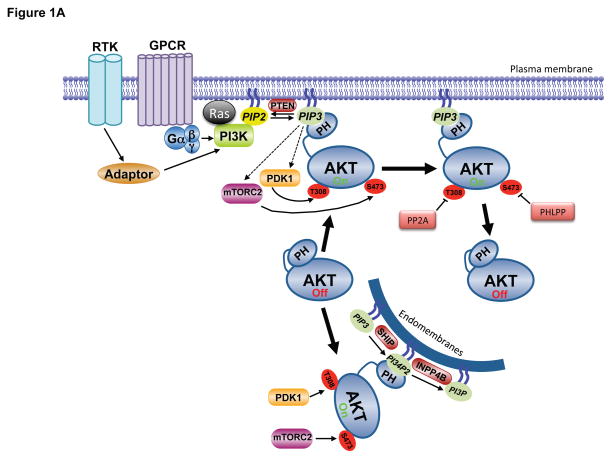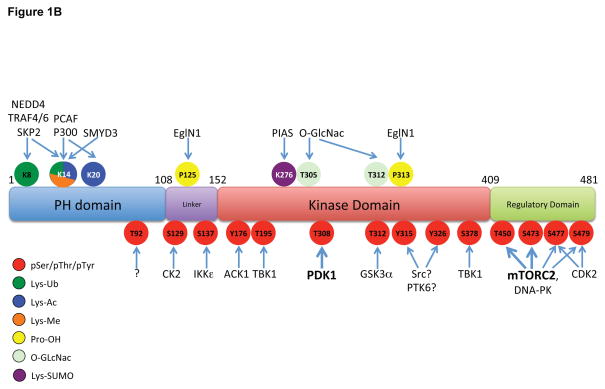Figure 1. Molecular mechanisms of Akt regulation.
A. Stimulation of RTKs or GPCRs leads to activation of PI3K, leading to PIP3 production at the plasma membrane. Cytosolic inactive AKT is recruited to the membrane and engages PIP3 through PH domain binding. This leads to phosphorylation of T308 and S473 by PDK1 and mTORC2, respectively, resulting in full activation. Signal termination is achieved by the PIP3 phosphatase PTEN, and the PP2A and PHLPP protein phosphatases. A separate endomembrane pool of active AKT likely exists that is activated through engagement of PI3,4P2 through the action of the SHIP phosphatase, and terminated by INPP4B. B. The modular structure of AKT1 with position of PTMs color coded for phosphorylation (pSer/pThr/pTyr), acetylation (Lys-Ac), ubiquitylation (Lys-Ub), methylation (Lys-Me), hydroxylation (Pro-OH), glycosylation (O-GlcNac) and SUMOylation (Lys-SUMO).


